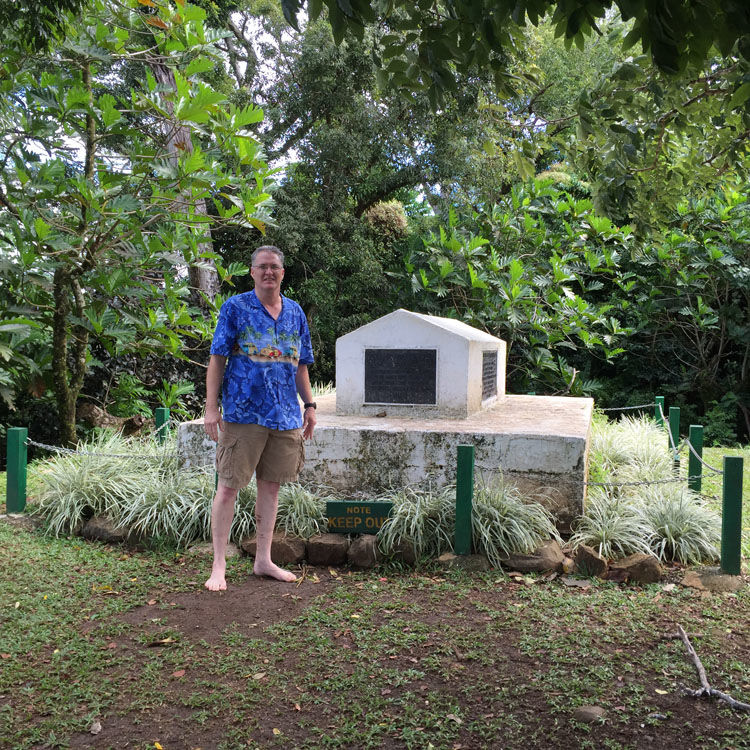A Treasured Life
Published 9:55 am Friday, July 15, 2016

- A Treasured Life
By Amanda Jean Harris
In earnest, it’s hard to say when Avery Munson became a treasure hunter. It’s much easier to say where it happened. Right in New Iberia in the bayou with his bare feet and a heart for exploration, which isn’t waning with age.
br
One of his distinct memories — tromping in the mud with bare feet (how else would one tromp and thus feel the treasure beneath foot) and finding a silver Civil War bayonet.
br
“More than once I sliced my feet and the last thing I wanted was a tetanus shot,” says the New Iberia native who is most notably credited (along with a small crew of other Iberia folks) with finding the SS New York. It was a mammoth discovery, one that took years to fully come to fruition.
br
Treasure hunting, you see, is a painstaking process in many ways. No grand action-packed swashbuckling around here. There is research and maps and diving and living on boats. There were self-funded campaigns and going out on the boat to explore when he wasn’t offshore for his day job on an oilrig. There were not so glamorous treks that many would find tedious. Not Munson.
br
He’s had a heart attack, a stroke. He’s had to file for bankruptcy and work his way back to even. He has put a lot of miles on what he calls a “blessed life” and after years in Houston has returned to Acadiana.
br
“That bayou mud between my toes,” he says plainly when asked about his return to his roots. “You gotta’ come back sooner or later. You see how many people move away? They move away and they come back.”
br
But, coming back doesn’t mean slowing down.
br
It’s clear that while the SS New York was a serious find, it did nothing to diminish that yearning that began in his bones when he learned the history of Civil War relics in his own backyard.
br
“I was looking for Civil War artifacts in the Bayou Teche. I was skipping school when I was 10 and tromping in the mud looking for things. I grew up metal detecting on the Bayou.”
br
And then came the move, which only further fueled his passions and gave him a new skill set conducive to treasure hunting. “We moved to Guam when I was 14 and I learned to scuba dive,” he says.
br
The WWII era finds were endless in the area and he was able to dive on shipwrecks the likes of which few ever see. He eventually returned to Acadiana and met up with an old friend who had a boat.
br
“We went out and started looking for shipwrecks off the Gulf of Mexico,” he says.
br
The process is always tedious and that was certainly the case with Munson and his friend Gary Hebert as they hunted the SS New York. The foundation begins with research and there were years of poking around the Gulf finding tremendous amounts of oilfield rig parts, trash and scrap.
br
And then came the SS New York.
brIt was a self-funded endeavor and took 17 years to bring up. It is an example of the kind of long-term commitment this work requires. The sort of tenacity needed to see it through from theory to tangible evidence.
br
“You work at it and work at it,” he says.
br
The SS New York was a steamship from the mid 1800s that shuttled passengers from Galveston to New Orleans. On one of these trips around the time of the Mexican-American War a hurricane sunk the ship along with $40,000 in silver and gold coins and the lives of 17 aboard including 5 children. Another ship rescued the 36 survivors and the treasure was lost. A treasure, which by the time it was found was worth millions. Priceless coins.
br
In 1990 came the first clue Munson and friends were onto the big find. They found an 1827 British gold sovereign and two 1843 silver half dollars. It would be four more years before they confirmed the wreck was the New York.
br
Those moments, however, were not what you may assume they would be for a treasure hunter. And this is when you understand what it all must mean to Munson. “It was almost somber,” he says of the realization that the SS New York had been found along with a bevy of coins. “When we found the first coins I wasn’t giddy at all. I was giddy maybe once or twice because you can’t help it. But once you find it … now what do we do? It’s serious.”
br
Things would become more serious in some ways and less in others in the years after. Munson describes the many ships, wrecks and salvages he’s worked on after the New York — trying not to step on sea lions, weeks spent cutting fishing line from beautiful reefs, abandoned ships in Nova Scotia with the fog rolling in from the Atlantic. The Galapagos Islands and the lure of the Pacific. Atop Japanese mountainsides looking below at the watery graves of Americans from WWII.
br
Lately he’s been doing work around the globe removing wrecks from beaches and harbors and reefs. Now he’s moving onto land with his sights still on future projects far flung. These things he speak of are far more about closure or adventure in equal parts and less about gleaming treasure. Perhaps this is part of the journey Munson has been on for several years including a stroke that one doctor said would keep him out of the deep for good.
br
“After the stroke one doctor said I would never dive again. Another one said I could, but with someone else. In 2014 was my first dive in five years and it was in Guam, right where I learned to dive. It was a blessing. Having a stroke and going bankrupt — the first real struggles in my life. I consider it a blessing. You don’t know how important someone is in your life until you lose them. You don’t’ know how important your day-to-day life is. You see someone with a cane and think poor guy; glad I’m not him. Until you face it. It makes everything more meaningful.”
br
The excitement in Munson’s voice is clear when he speaks about the sort of work he’s interested in the most — WWII missing.
br
“The thing I really want to do is go to the South Pacific and find an airplane with a pilot in it from World War II. I’ve been to islands in the Pacific that have missing Americans all over it. I went to Iwo Jima three years ago and there are still 400 missing Americans and 1,200 missing Japanese.”
br
Munson says he knows these are not normal aims. He doesn’t have a wife and kids, so he has the freedom that comes with his lifestyle.
br
“These adventures, these pursuits, they all have some kind of goal. The reward is in the successful conclusion when you read accounts of missing pilots or shipwrecks with one survivors –it’s very captivating.”





